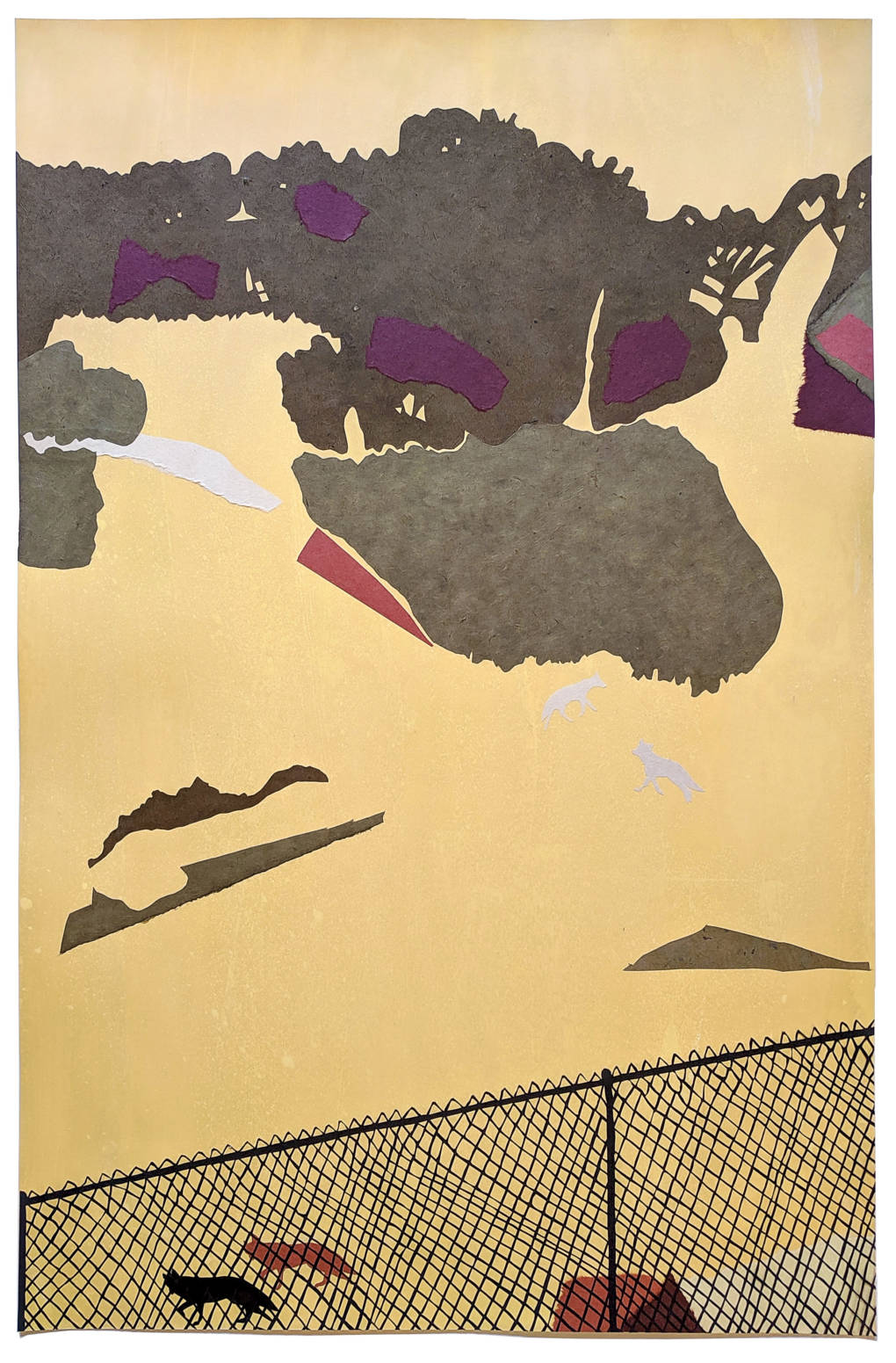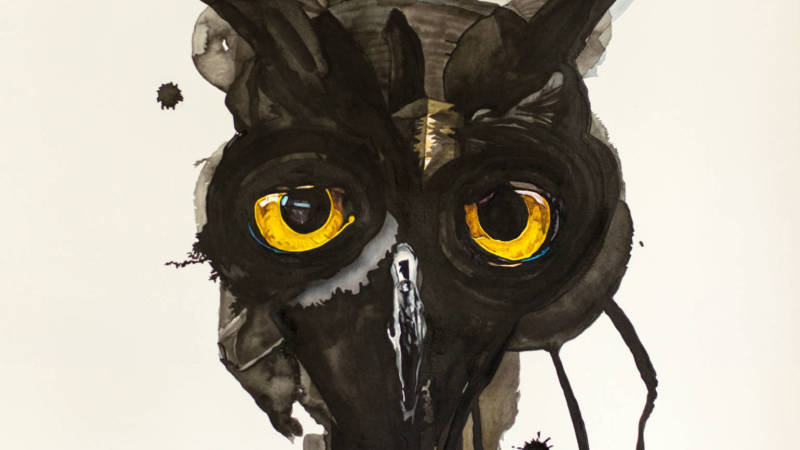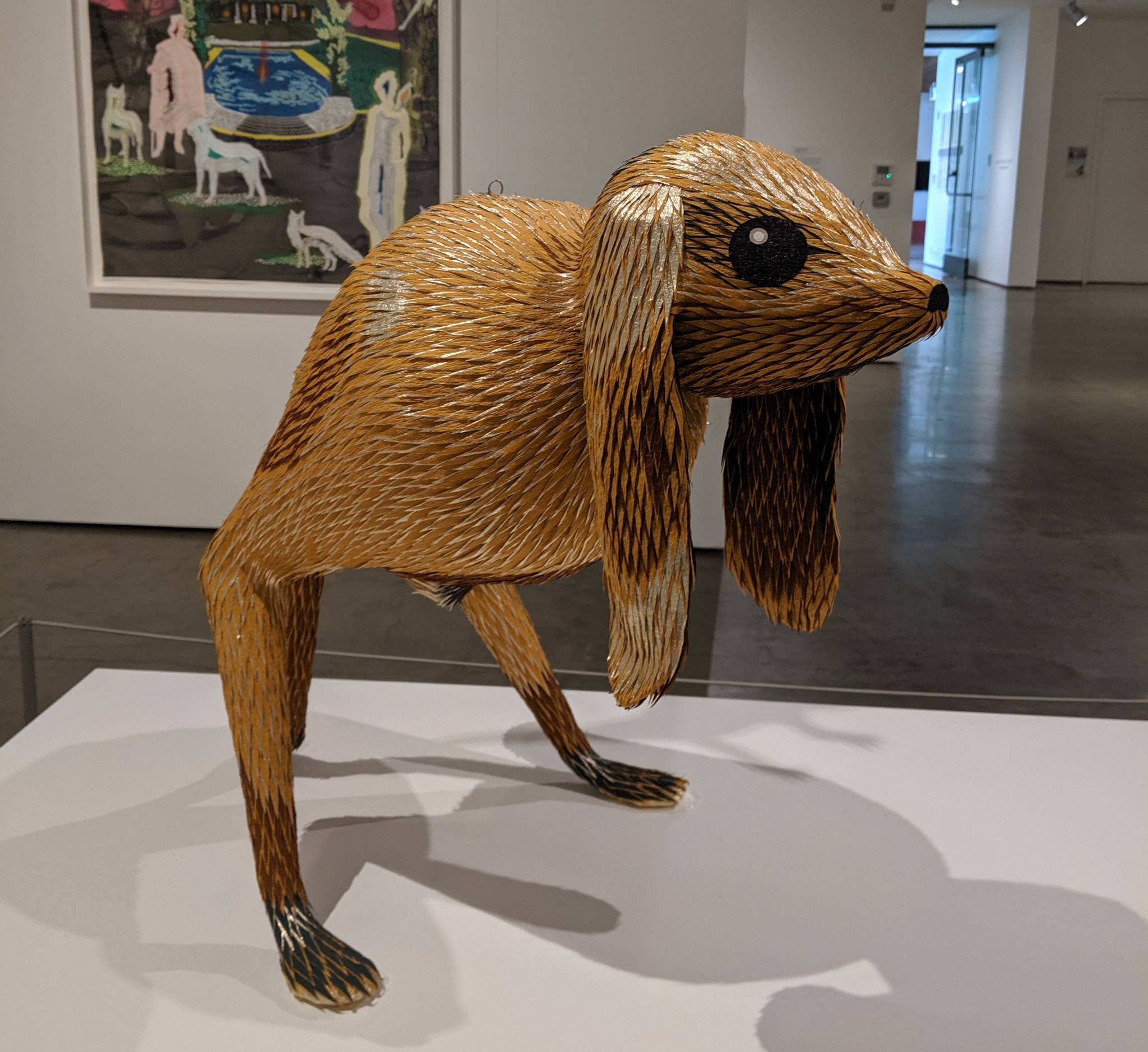As I began writing this article, I checked my email in a moment of procrastination and saw an alert from the social media site Nextdoor titled “Yet Another Coyote Encounter” reporting a coyote sighting in an urban San Francisco park. Later, as I continued working outdoors in Santa Cruz, a wild turkey ran past me, and I was compelled to photograph it and share the image.
These encounters with animals were somehow both mundane and noteworthy. We have lived alongside non-human animals since before we were human, and yet we so often find ourselves in awe when we encounter someone from outside our species.
Encounters: Honoring the Animal in Ourselves, an exhibition at the Palo Alto Art Center, grapples with this seeming contradiction with work from 16 artists who likewise feel the urge to share their own encounters, those of others, and even fictitious ones.

The artworks in the exhibition frame the relationships between humans and non-humans in a select number of ways. There are relationships defined by alienation and distance, fantastical views of animals, animals serving as guides, and animals presented as peers to humans. Many of these relationships and perspectives overlap, and there are likely many more present, but each emerges as prominent and noteworthy.
Palo Alto-based artist Fanny Retsek depicts scenarios similar to the Nextdoor post in three mixed-media pieces titled Coyote Sighting. In one, a small coyote and its shadow are seen boldly walking behind a chain-link fence; in another, the creature is hidden, less visible than an outdoor house cat. The fascination with these sightings results from humans’ increasing alienation from non-domesticated animals, especially among city dwellers.




